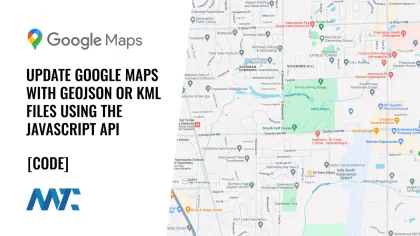
KML (Keyhole Markup Language) and GeoJSON (Geographic JSON) are two file formats used for storing geographic data in a structured manner. Each format is suitable for different types of applications and can be used in various mapping services, including Google Maps. Let’s delve into the details of each format and provide examples:
KML File
KML is an XML-based format for representing geographic data, developed for use with Google Earth. It’s great for displaying points, lines, polygons, and images on maps. KML files can include features like placemarks, paths, polygons, styles, and more.
Example of a KML File:
<?xml version="1.0" encoding="UTF-8"?>
<kml xmlns="1www.opengis.net/kml/2.2">
<Document>
<name>Example KML</name>
<Placemark>
<name>New York City</name>
<description>New York City</description>
<Point>
<coordinates>-74.006,40.7128,0</coordinates>
</Point>
</Placemark>
</Document>
</kml>This KML example defines a single placemark for New York City. The <coordinates> tag specifies the longitude, latitude, and elevation (in that order), with elevation being optional.
GeoJSON File
GeoJSON is a format for encoding a variety of geographic data structures using JSON. It supports geometry types such as Point, LineString, Polygon, MultiPoint, MultiLineString, MultiPolygon, and GeometryCollection.
Example of a GeoJSON File:
{
"type": "FeatureCollection",
"features": [
{
"type": "Feature",
"properties": {
"name": "New York City",
"description": "New York City"
},
"geometry": {
"type": "Point",
"coordinates": [-74.006, 40.7128]
}
}
]
}This GeoJSON example also defines a single point for New York City, similar to the KML example. The coordinates array contains the longitude and latitude.
Differences and Usage
- KML is often used with Google Earth and other applications that require rich geographic annotations and styling. It’s very suitable for storytelling or detailed geographic presentations.
- GeoJSON is more lightweight and is typically used in web applications, particularly those that use JavaScript. It is the preferred format for web-based map applications and GIS software due to its simplicity and compatibility with JavaScript Object Notation.
Both formats are crucial in various sales and marketing strategies, especially when geographically mapping customer data, analyzing market trends, or planning location-based marketing campaigns. The ability to visually represent data on maps can be a powerful tool in these contexts, aiding in better decision-making and strategy development.
How To Embed KML or GeoJSON in Your Google Map
To embed a KML or JSON file with geographic data using the Google Maps JavaScript API, you need to follow these steps for each type of file:
Embedding a KML File
- Prepare the KML File: Ensure your KML file is accessible online. It must be publicly accessible for Google Maps to retrieve it.
- Create a Map: Initialize a new Google Map in your application.
- Load the KML Layer: Use the
google.maps.KmlLayerclass to add your KML file to the map.
Example Code:
function initMap() {
var map = new google.maps.Map(document.getElementById('map'), {
zoom: 8,
center: {lat: -34.397, lng: 150.644}
});
var kmlLayer = new google.maps.KmlLayer({
url: 'http://yourdomain.com/path/to/yourfile.kml',
map: map
});
}Replace 'http://yourdomain.com/path/to/yourfile.kml' with the URL of your KML file.
Embedding a JSON File
- Prepare the JSON File: Your JSON should be in the GeoJSON format, a standard format for encoding geographic data.
- Create a Map: As with the KML, initialize a Google Map in your application.
- Load the GeoJSON Layer: Use the
map.data.loadGeoJson()method to add your GeoJSON data to the map.
Example Code:
function initMap() {
var map = new google.maps.Map(document.getElementById('map'), {
zoom: 4,
center: {lat: -28, lng: 137}
});
// Assuming your GeoJSON file is located at the specified URL
map.data.loadGeoJson('http://yourdomain.com/path/to/yourfile.json');
}Replace 'http://yourdomain.com/path/to/yourfile.json' with the URL of your GeoJSON file.
Things to Keep in Mind
- Ensure that your KML and GeoJSON files are correctly formatted and publicly accessible.
- The Google Maps JavaScript API key is required. Include it in your HTML file where the Google Maps script is loaded.
- Adjust the map
zoomandcenterproperties according to your data’s geographic location.
By integrating KML or GeoJSON files in this way, you can effectively display rich geographic data on your web application, offering a dynamic and interactive map experience for users. This can be particularly useful in various sales and marketing contexts, where visualizing geographic data can enhance the understanding and engagement of potential clients or team members.